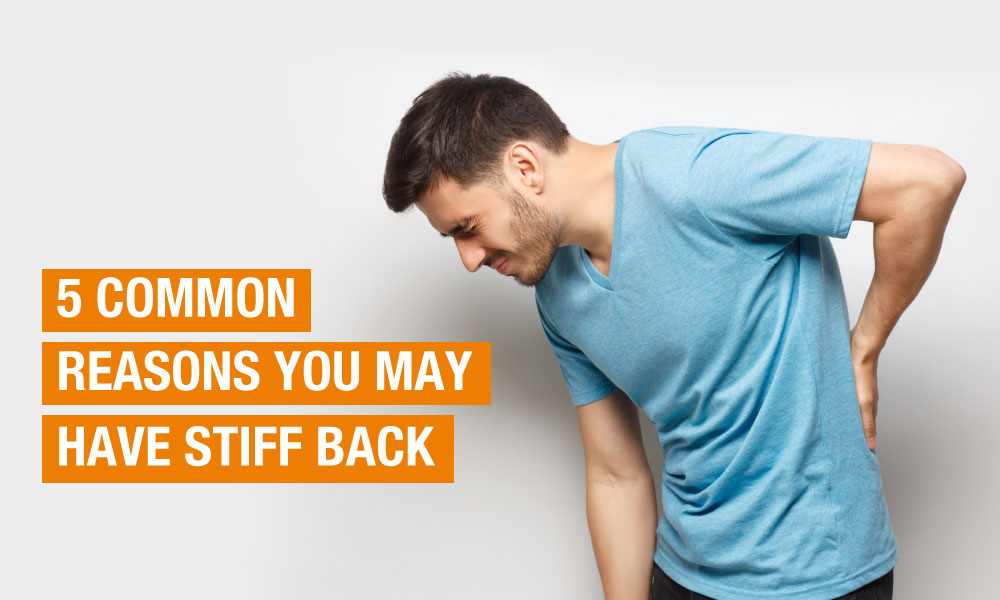Request Appointment
Enter your details and we will be in touch with you shortly;
Or call
8655885566
between 8 am and 8 pm.


Let’s understand common reasons you may have a stiff back. We will learn exercises that may help reduce the muscular and joint Stiffness in and around your Lower back.
1. Sitting Posture: During the pandemic, most of us have restricted ourselves to the confines of our homes. We spend more than 12 to 14 hours on our gadgets, from doing official work to social media entertainment. We spend hours slouching in the “C “shape of the spine instead of sitting upright in the natural “S” shape. This can cause:
2. Disc Bulge or Herniation: Acute Low back pain caused by heavy lifting or sudden awkward movement. The sudden increase in spine load through the spine eg returning to the gym after Covid break or suddenly playing cricket or golf after the break. This can result in
3. Weak Or Tight Muscles: A lack of capacity of your lower back muscles to handle the amount of load and external force they are being exposed to overtime. This is caused by a lack of localized strength of the lower back and or poor movement patterns. Muscle Imbalances, which are caused by overuse of some muscles and weakness of others.
• Psoas Muscle (Hip Flexors): If your Hip flexors are giving you back issues, you need to find out why the Psoas is stiffening up and stopping your spine from moving freely, and only Then will you be on your way to a PAIN-FREE Back. Psoas muscle attaches to the spine become tight resulting in the back problem. Stretching these muscles can help you relieve the stiff Back.
• Hamstring Muscles: The tightness of these, make the muscle short. This can result in disrupting the alignment of the spine, causing pelvis tilting and causing stiffness in the back. Hamstring Stretching can relieve stiff back pain.
• Quadratus Lumborum Muscles or QL: They are found on either side of the lumbar spine ( lower Back ) are important muscles that help stabilize the lower back. They connect the lower spine to the pelvis and assist with movements like side bending and raising the hip. Tightness in these muscles can also result in low back pain and a Stiff Back.
• Piriformis Muscle and Gluteal Muscle: Tightness in these muscles can give you a stiff Back and sometimes Sciatica.
To reduce Stiff back we must improve the mobility of the above muscles. We should have active control of the joints in different positions, translating into ease of movement. This result is mitigating an Injury.
4. Arthritis: When back pain persists for weeks and months it is important to identify the cause. Arthritis is a very common condition giving chronic back pain.
5. Spinal Stenosis: Central or Lateral canal stenosis can cause Stiff spine and leg symptoms.
1. Identify if the problem is Mechanical or Non-Mechanical. Mechanical Low back pain and stiff back will change with movements. Non-Mechanical low back pain could be inflammatory.
2. Rule Out the Red flags: For back problems, the followings signs and symptoms indicate urgent Medical attention.
3. Physical therapy: Directional Exercises based on a thorough assessment will result in pain relief. These medical movements will relieve your Stiff back and get you back to doing all your activities giving you long-term relief.
4. Once the acute pain is better. Physical Therapy Treatment involves identifying the Weak Muscles by doing Digital Spine Test. Basis this identifying the root causes and working on weak muscles.
5. Treatment would include stretching the tight muscles like Psoas, Hamstrings, Quadratus Lumborum and Piriformis.
6. Ergonomics Evaluation is essential to the success of the treatment along with the maintenance of the correct biomechanics while doing everyday chores.
7. A good Ergonomic chair is essential to the recovery from a Stiff back. A good Lumbar Support cushion-like @Sitplus can be useful to maintain the correct Ergonomics.
Visit our nearest clinic for your first consultation